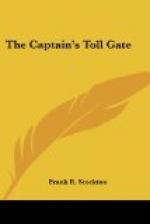I have mentioned his fairy stories. Having been a great lover of fairy lore when a child, he naturally fell into this form of story writing as soon as he was old enough to put a story together. He invented a goodly number; and among them the Ting-a-Ling stories, which were read aloud in a boys’ literary circle, and meeting their hearty approval, were subsequently published in The Riverside Magazine, a handsome and popular juvenile of that period; and, much later, were issued by Hurd & Houghton in a very pretty volume. In regard to these, he wrote long afterward as follows:
“I was very young when I determined to write some fairy tales because my mind was full of them. I set to work, and in course of time produced several which were printed. These were constructed according to my own ideas. I caused the fanciful creatures who inhabited the world of fairy-land to act, as far as possible for them to do so, as if they were inhabitants of the real world. I did not dispense with monsters and enchanters, or talking beasts and birds, but I obliged these creatures to infuse into their extraordinary actions a certain leaven of common sense.”
It was about this time, while very young, that he and his brother became ambitious to write stories, poems, and essays for the world at large. They sent their effusions to various periodicals, with the result common to ambitious youths: all were returned. They decided at last that editors did not know a good thing when they saw it, and hit upon a brilliant scheme to prove their own judgment. One of them selected an extract from Paradise Regained (as being not so well known as Paradise Lost), and sent it to an editor, with the boy’s own name appended, expecting to have it returned with some of the usual disparaging remarks, which they would greatly enjoy. But they were disappointed. The editor printed it in his paper, thereby proving that he did know a good thing if he did not know his Milton. Mr. Stockton was fond of telling this story, and it may have given rise to a report, extensively circulated, that he tried to gain admittance to periodicals for many years before he succeeded. This is not true. Some rebuffs he had, of course—some with things which afterward proved great successes—but not as great a number as falls to the lot of most beginners.
The Ting-a-Ling tales proved so popular that Mr. Stockton followed them at intervals with long and short stories for the young which appeared in various juvenile publications, and were afterward published in book form—Roundabout Rambles. Tales out of School, A Jolly Fellowship, Personally Conducted, The Story of Viteau, The Floating Prince, and others. Some years later, after he had begun to write for older readers, he wrote a series of stories for St. Nicholas, ostensibly for children, but really intended for adults. Children liked the stories, but the deeper meaning underlying them all was beyond the grasp of a child’s mind.




